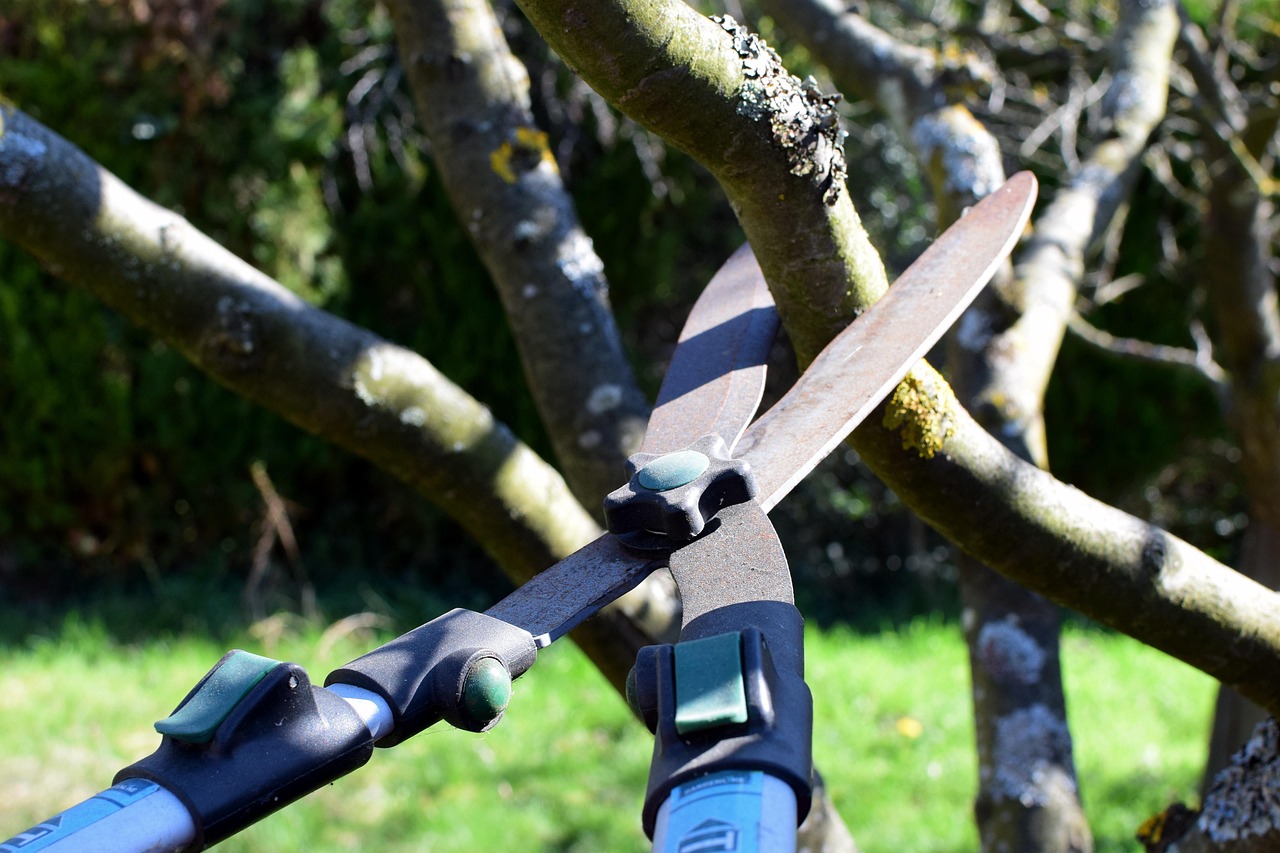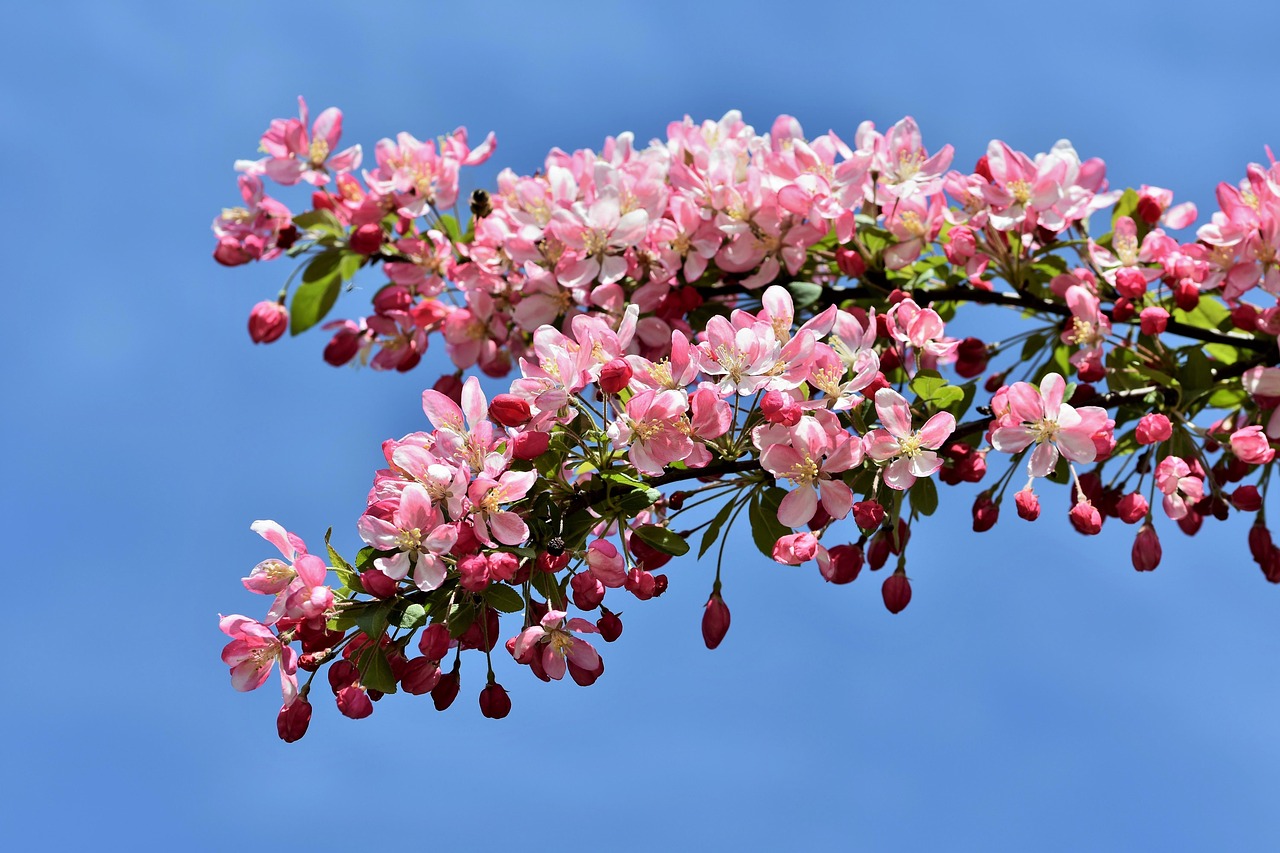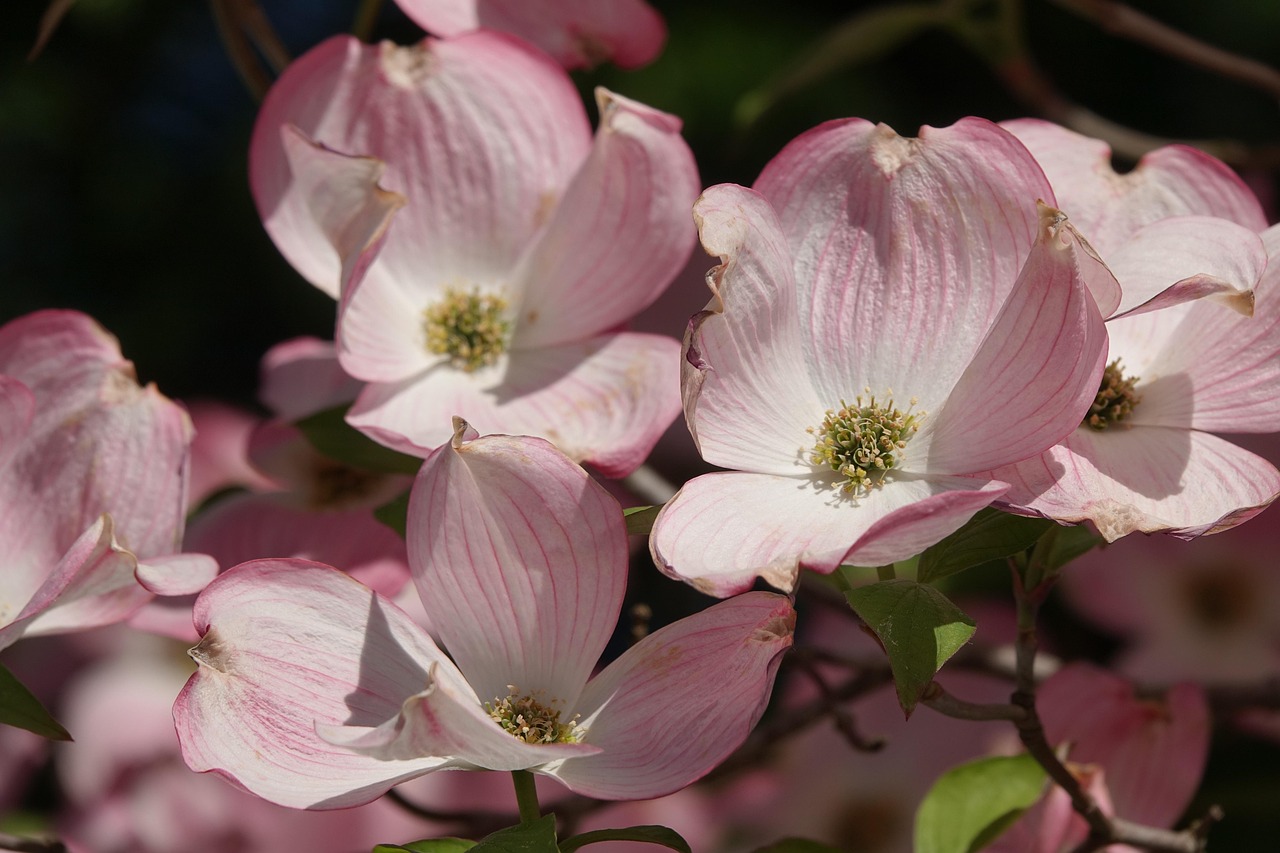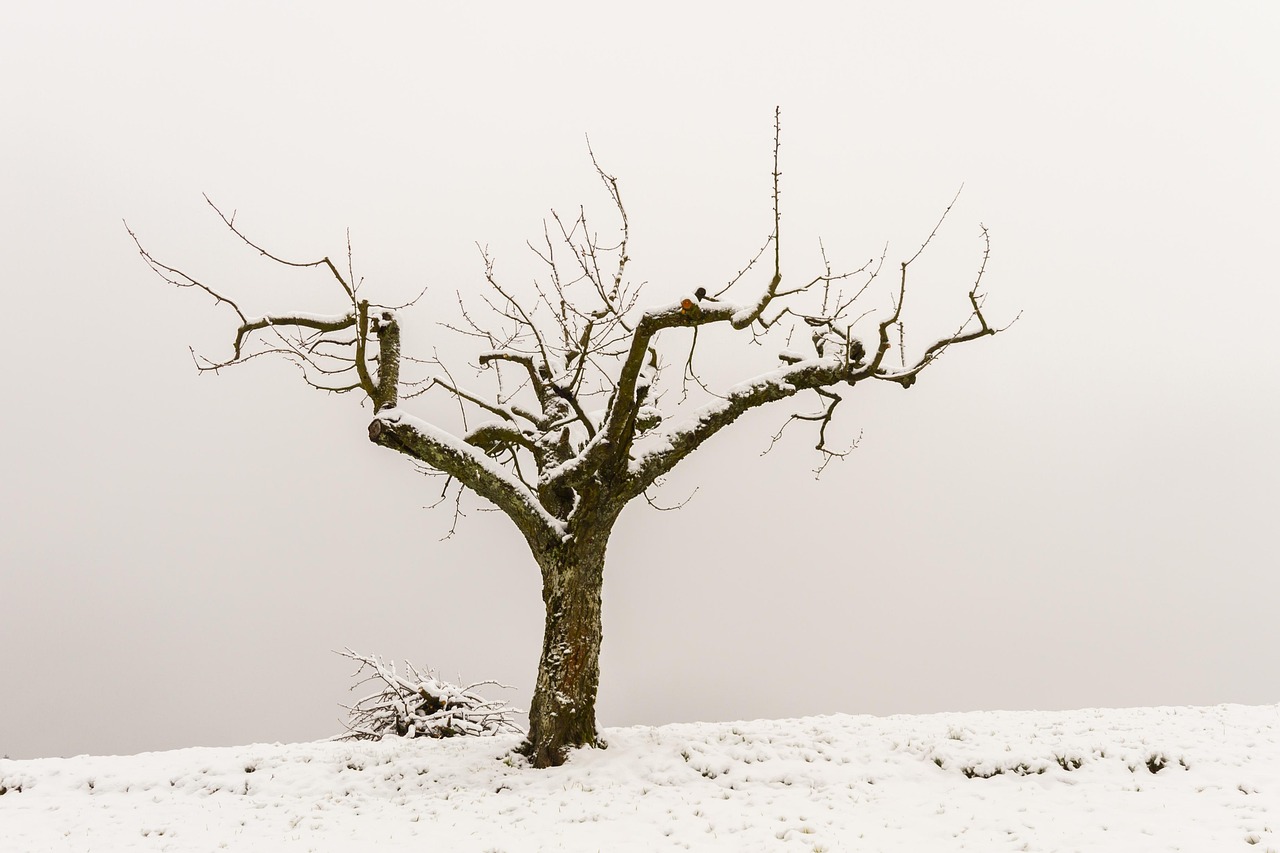Crabapple tree pruning is essential for maintaining the health and beauty of the tree. It enhances air circulation, encourages new growth, and improves flowering. Proper pruning techniques vary by season and climate, making it important to understand the best practices for each situation.
Crabapple trees are popular ornamental trees known for their stunning spring blooms and vibrant fall colors. They belong to the Malus genus and include a variety of species and cultivars. Pruning these trees is crucial not only for aesthetic reasons but also for their overall health. Well-pruned crabapple trees can resist diseases better and have a longer lifespan.

Understanding the right time to prune is essential. Different seasons offer unique opportunities to care for your crabapple tree. For example, late winter or early spring is often ideal for structural pruning, while summer can be used for light maintenance. Each season presents its own set of advantages and challenges.
Understanding Crabapple Tree Growth
Crabapple trees have a distinctive growth pattern that includes a mix of upright and spreading branches. This unique structure can create a dense canopy if not managed properly. Here are some key growth characteristics:
- Height: Crabapple trees typically range from 15 to 25 feet tall.
- Width: They can spread between 10 to 25 feet wide, depending on the variety.
- Growth Rate: These trees generally grow at a moderate pace of about 12 to 24 inches per year.
Their flowering period is one of the most celebrated features, attracting pollinators like bees and butterflies. However, if the tree becomes too dense, it can lead to reduced air circulation and sunlight penetration. This can cause various health issues, including fungal infections. Understanding the tree’s natural growth will help guide your pruning strategy.

Seasonal Pruning Techniques
Pruning techniques vary significantly across seasons. Knowing when and how to prune your crabapple tree ensures optimal health and aesthetics. Below are guidelines for each season:
Winter Pruning
Winter is often considered the best time for structural pruning. During this dormant period, the tree’s energy is conserved, making it easier to manage its shape without risking damage.
- Remove any dead or diseased branches.
- Thin out crowded areas to improve airflow.
- Shape the tree by cutting back excessive growth to maintain a desirable form.
Spring Pruning
Spring is an exciting time for crabapple trees as they begin to bloom. However, it’s still possible to prune at this time, especially if you missed winter pruning.

- Focus on removing suckers that grow from the base of the tree.
- Trim any branches that are crossing or rubbing against each other.
- Avoid heavy pruning during full bloom to prevent stress on the tree.
Summer Pruning
Summer pruning allows for more precise maintenance without affecting the tree’s overall health significantly. This time is ideal for correcting any mistakes made during winter or spring pruning.
- Eliminate any unwanted water sprouts that grow vertically from branches.
- Lightly thin out foliage to enhance sunlight exposure.
- Avoid heavy cuts that could stress the tree during its active growth phase.
Fall Pruning
Fall is generally not recommended for major pruning activities. However, light maintenance can still be performed at this time.
- Remove any fallen leaves and debris to prevent disease.
- If necessary, prune lightly to shape the tree before winter dormancy.
Climate Considerations
The climate in which your crabapple tree grows significantly impacts its pruning needs and timing. Here are some considerations based on different climates:

| Climate Type | Pruning Recommendations |
|---|---|
| Temperate | Prune in late winter or early spring before new growth starts. |
| Tropical | Avoid heavy pruning during the rainy season; focus on light maintenance. |
| Cold | Winter pruning is best; be cautious of frost damage in late spring pruning. |
Caring for crabapple trees through proper pruning is essential for maintaining their beauty and health. By understanding seasonal techniques and climate-specific recommendations, you can ensure that your tree thrives throughout the years.
Essential Pruning Tools
To effectively prune your crabapple tree, having the right tools is essential. Proper tools ensure clean cuts, which promote better healing and reduce the risk of disease. Below are some recommended tools for pruning crabapple trees:
- Hand Pruners: Ideal for cutting small branches up to ¾ inch in diameter. Choose a high-quality pair with a sharp blade.
- Loppers: Useful for branches that are thicker, usually between ¾ inch to 2 inches in diameter. Look for a lightweight model for ease of use.
- Pruning Saw: Necessary for larger branches exceeding 2 inches in diameter. A folding pruning saw is convenient for storage.
- Gloves: Protect your hands from thorns and rough bark while pruning.
- Safety Glasses: Shield your eyes from flying debris as you cut branches.
Using the right tools not only makes the process easier but also helps prevent injuries to both you and the tree. Always ensure your tools are clean and sharp before starting to minimize damage to the tree.
Pruning Techniques for Crabapple Trees
Understanding different pruning techniques is vital for achieving the best results. Each method serves a specific purpose and can enhance the overall health of your crabapple tree.
Thinning
This technique involves removing select branches to improve airflow and light penetration. Thinning can help reduce the risk of diseases caused by poor air circulation.
- Identify crowded areas where branches are overlapping.
- Cut back branches at their base or where they intersect with other branches.
- Aim to maintain an open structure while preserving the tree’s natural shape.
Heading
Heading involves cutting back a portion of a branch to promote new growth. This technique is especially useful for controlling the height and width of the tree.
- Select a healthy branch and cut it back to just above a bud.
- This will encourage new shoots to grow from that point.
- Avoid heading too aggressively, as it can lead to excessive new growth.
Reduction
The reduction technique is used to decrease the size of a branch without completely removing it. This method helps maintain the tree’s form while controlling its size.
- Identify branches that are too long or reaching over structures.
- Cut them back to a lateral branch or bud that will continue to grow.
- This helps maintain the overall shape without making drastic cuts.
Common Mistakes to Avoid
Even experienced gardeners can make mistakes while pruning. Here are some common pitfalls to avoid when pruning crabapple trees:
- Over-pruning: Removing too much foliage can stress the tree and hinder its growth.
- Improper Timing: Pruning during the wrong season can lead to reduced flowering and increased susceptibility to disease.
- Neglecting Cleanliness: Failing to sanitize tools can spread diseases between trees. Always clean your tools with rubbing alcohol before use.
- Poor Cuts: Making jagged cuts can promote disease and slow healing. Use sharp tools for clean cuts.
Signs Your Crabapple Tree Needs Pruning
Recognizing when your crabapple tree requires pruning is crucial for maintaining its health. Here are some signs to look for:
- Dead or Diseased Branches: Branches that are brown, brittle, or show signs of disease should be removed immediately.
- Crowded Growth: If branches are crossing each other, it may be time for thinning.
- Poor Flowering: If your tree has fewer blooms than usual, it might need a structural prune to rejuvenate growth.
- Pests: Infestations can weaken branches, indicating the need for pruning to remove affected areas.
Post-Pruning Care
After pruning, giving your crabapple tree proper care is essential for recovery. Here are some important steps:
- Watering: Ensure the tree receives adequate water, especially during dry spells. Moisture helps speed up the healing process.
- Mulching: Apply a layer of mulch around the base of the tree to retain moisture and suppress weeds.
- Fertilizing: A balanced fertilizer can promote healthy growth following pruning. Apply it according to package instructions.
- Pest Monitoring: Keep an eye out for any signs of pests or disease after pruning and take action as needed.
Caring for your crabapple tree after pruning will help it thrive in the seasons to come. With proper techniques and timely interventions, you can ensure that your tree remains healthy and beautiful throughout its life.
Common Pests and Diseases Affecting Crabapple Trees
Crabapple trees can be susceptible to various pests and diseases, which can impact their health and flowering ability. Recognizing these threats is crucial for effective management and ensuring the vitality of your tree. Below are some common pests and diseases that you may encounter:
Pests
- Apple Maggot: This fly lays eggs in the fruit, resulting in brown, mushy areas. Check for signs of damage, especially in late summer.
- Codling Moth: Larvae tunnel into the fruit, causing it to drop prematurely. Look for small holes in the apples.
- Spider Mites: Tiny pests that can cause leaf stippling and yellowing. They thrive in hot, dry conditions.
- Japanese Beetles: These beetles feed on leaves, creating a lace-like appearance. They are especially active in late spring and early summer.
Diseases
Several diseases can plague crabapple trees, leading to reduced vigor and aesthetic appeal. Here are some of the most common:
- Apple Scab: A fungal disease that causes dark spots on leaves and fruit. It thrives in cool, wet weather.
- Fire Blight: A bacterial infection that affects blossoms, shoots, and branches, giving them a scorched appearance.
- Powdery Mildew: This fungal infection appears as a white powdery coating on leaves. It typically occurs in warm, dry conditions.
- Cedar-Apple Rust: A disease that requires both cedar and apple trees to complete its life cycle. Look for yellow-orange spots on leaves.
Integrated Pest Management (IPM) Strategies
Implementing Integrated Pest Management (IPM) strategies can help you effectively manage pests and diseases while minimizing chemical use. Here are some steps you can take:
Cultural Practices
- Proper Spacing: Ensure adequate spacing between trees to improve air circulation, reducing humidity levels that favor disease development.
- Watering Techniques: Water at the base of the tree early in the day to allow foliage to dry quickly, reducing fungal diseases.
- Sanitation: Remove fallen leaves and fruit to eliminate potential breeding grounds for pests and pathogens.
Biological Controls
Consider natural predators and beneficial insects to control pest populations. Introducing ladybugs and lacewings can help reduce aphid populations effectively.
Chemical Controls
If pest populations become unmanageable, chemical treatments may be necessary. Always choose targeted pesticides that are less harmful to beneficial insects. Follow all label instructions carefully.
Seasonal Care Routine
Maintaining a seasonal care routine is vital for the health of your crabapple tree. This routine should include monitoring, fertilization, pruning, and disease management throughout the year.
Spring Care
- Inspect for pests as buds start to open.
- Apply a balanced fertilizer to encourage healthy growth.
- Thin any overcrowded branches after flowering to improve air circulation.
Summer Care
- Continue monitoring for pests and diseases; treat as needed.
- Water regularly, especially during dry periods.
- Remove any dead or damaged branches promptly.
Fall Care
- Clean up fallen leaves and debris to prevent overwintering pests and diseases.
- Consider applying a dormant oil spray to suffocate any remaining pests.
- Ensure proper watering as the tree prepares for dormancy.
Winter Care
- If located in areas with heavy snowfall, consider wrapping young trees with protective material to prevent damage from snow load.
- Plan for pruning once the tree is dormant, typically in late winter.
- Monitor for rodent activity around the base of the tree and take preventive measures if necessary.
Selecting the Right Crabapple Varieties
Selecting the right variety of crabapple tree can enhance your gardening experience. Some varieties are bred for specific climates, pest resistance, or ornamental features. Here are a few popular options:
| Variety Name | Description | Pest Resistance | Best Climate |
|---|---|---|---|
| ‘Spring Snow’ | A non-fruiting variety with stunning white flowers. | High | Temperate |
| ‘Red Jade’ | A weeping variety with pink blooms and small red fruit. | Moderate | Tropical/Temperate |
| ‘Prairiefire’ | Keeps vibrant foliage throughout the growing season and has good disease resistance. | High | Temperate/Cold |
| ‘Centennial’ | A hardy variety with attractive red fruit and excellent spring blooms. | Moderate | Cultivated widely across various climates |
Selecting a suitable variety based on your local climate and specific landscape needs can maximize your enjoyment of these beautiful trees. Understanding their characteristics helps you provide tailored care for optimal growth and flowering.
Enhancing Aesthetic Appeal
Crabapple trees are not just functional; they can serve as stunning focal points in your garden. With their vibrant flowers in spring and colorful fruits in fall, these trees add significant aesthetic value to landscapes. Here are some ways to enhance the visual appeal of your crabapple tree:
- Planting Location: Choose a spot where the tree can be viewed from multiple angles. Consider planting it near walkways or patios where its beauty can be appreciated.
- Companion Planting: Pair your crabapple tree with other plants that bloom at different times to create a continuous display of color throughout the seasons.
- Seasonal Decorations: In the fall, consider using the crabapples for seasonal decorations or displays. Their bright colors can complement autumn decor.
Creating an attractive landscape is not just about the tree itself. It involves thoughtful planning and consideration of how the tree interacts with its surroundings.
Crabapple Tree Care Throughout the Year
Year-round care is essential for keeping your crabapple tree healthy and vibrant. Each season presents unique opportunities and challenges for maintenance. Here’s a breakdown of care tasks for every part of the year:
Spring Tasks
- Inspect branches for any winter damage.
- Perform any necessary pruning to shape the tree and remove dead or diseased wood.
- Apply a slow-release fertilizer to promote strong growth.
Summer Tasks
- Monitor for pests and treat infestations promptly with organic or chemical controls as needed.
- Water consistently, especially during dry spells, to support ongoing growth.
- Mulch to conserve moisture and suppress weeds around the base of the tree.
Fall Tasks
- Clear away fallen leaves and debris to prevent harboring pests and diseases over winter.
- Evaluate the overall health of the tree and note any issues that need addressing in the next growing season.
- Consider applying a protective coating of dormant oil to suffocate overwintering pests.
Winter Tasks
- If applicable, wrap young trees to protect them from harsh winter conditions.
- Plan for upcoming pruning activities once the tree has gone dormant.
- Keep an eye out for signs of rodent activity, especially if snow covers the ground.
Supporting Local Wildlife
Cultivating crabapple trees not only benefits your garden but also supports local wildlife. The flowers attract pollinators like bees and butterflies, while the fruit serves as food for birds and small mammals. Creating a biodiverse environment helps foster a balanced ecosystem. Here are some ways to support wildlife while caring for your crabapple tree:
- Avoid Pesticides: Use pesticides sparingly, as they can harm beneficial insects that help pollinate your plants.
- Create Habitat: Leave some fallen fruit or leaves on the ground to provide food and shelter for local wildlife.
- Plant Native Species: Incorporate native plants into your garden alongside your crabapple tree to attract more local fauna.
Final Thoughts
Caring for a crabapple tree requires knowledge and commitment, but the rewards are well worth it. With their stunning blossoms, unique fruits, and overall charm, crabapple trees can significantly enhance any landscape. By understanding seasonal pruning techniques, recognizing pests and diseases, and providing year-round care, you can ensure your tree remains healthy and vibrant throughout its life.
The key takeaways include selecting the right variety suitable for your climate, employing effective pruning strategies during appropriate seasons, and being vigilant about potential pests and diseases. Furthermore, integrating your crabapple tree into a broader garden design can elevate its beauty while supporting local wildlife.
Ultimately, whether you are a novice gardener or an experienced horticulturist, nurturing a crabapple tree can be a fulfilling endeavor that brings beauty and life to your outdoor space. With diligence and care, your crabapple tree can flourish for generations, providing enjoyment and inspiration in every season.
